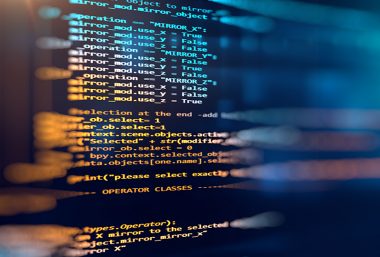Recruitment and early days
Having an electronic content management system (ECM) in place has the power to transform HR functions, bringing them together under one umbrella and using automation to simplify processes.
But which functions benefit most and where should you start?
Here we look at the lifecycle of HR data, starting with recruitment and ending with an employee leaving the business, and show how every single function can benefit from digital solutions:
The birth of an HR record: recruitment
Employee data is collected from the moment a job candidate sends in their personal data – for instance as CV or email. And it is HR which will look after it for its entire lifespan.
A manual recruitment process can be challenging and time consuming. Getting the job role authorized by senior management, putting together a job spec, reaching out to agencies, uploading to online job hubs such as LinkedIn. All of these involve manual processing.

Then you receive CVs and must communicate to applicants before the interview process even begins.
Finally, there is the job offer and a mountain of admin associated with onboarding.
The solution: An automated process brings all these steps together.
The authorization step is now a dynamic job requisition form – no emails – which takes minutes rather than hours to complete. HR is included in this process, and automatic job descriptions/specs are created and distributed. You can also browse a database of CVs from a digital system rather than relying on a HR Manager to keep old CVs in a drawer.
It’s easy to find where the stats on staff churn are, where the salary brackets are kept – and a dashboard overview allows you to answer questions such as “how much is my organization spending on recruitment agents?”
The business benefits:
- Saving time (there are fewer emails, less manual input, and less need for day-to-day management), freeing up employees to work on more important tasks.
- Improve efficiency between departments. IT managers will know immediately when there’s a new hire as an automated notification is sent.
- Having a digital recruitment process helps attract Millennials and Gen Z applicants
The early days:
Payroll
Recruitment requires a lot of personal data to be collected and brings with it compliance issues. It starts with making sure the person you are paying has the right to work and that you are paying them in the correct currency – and into a bank account that is live and valid.
In the UK this might be a P45 or P60, a copy of your passport or driving licence, or if you are a foreign national your right to work documentation or visa.
This data needs to be shared between different departments – for instance HR and finance – and often this is achieved through a flurry of emails which are not secure and add to data risk.
The solution: An ECM system will take those documents and automatically start a process which securely sends them to payroll, along with national insurance numbers, names, and addresses – and to any other department which requires them. It can manage permissions, only allowing those who need to see the data to view it. All without human input.
The business benefit: There is no longer a disconnect between departments – and no longer a need for multiple email exchanges, which take longer and can be a data threat. There is also less time spent inputting data and copying over names and addresses. Data is stored securely, quickly retrieved and only visible to those with the correct permissions.
Training and CPD
The business challenge: Once an employee is on board, they will often be trained – and records kept on how they are doing. These need to be securely stored, accessible and editable. Some training may be mandatory for health and safety or insurance purposes, so HR needs proof of who has undertaken it and who has not.
Solution: An ECM platform will be able to provide online training materials, whether that’s videos, presentations, or digital learning, for instance, and run them for you.
It can provide a selection of questions for the end user, randomised to ensure knowledge retention and to prevent them skipping through modules.
The added benefit of using ECM for this function is the provision of scheduling and reporting. Take ISO9001. This must be updated and repeated on a yearly basis, so being able to schedule a refresher training course and automatically have it emailed is valuable. People can then click through direct from their email to take the module.
The business benefits: The key benefits are ease of use and ease of access. It also encourages employee self-service, which means HR doesn’t have to be at the centre of administrating the process. The role of HR is limited to top-down management and utilising human resources to target areas where there are issues.
Reporting tools mean HR can quickly see who has undergone training and who hasn’t – and raise it to their manager if necessary. The report can provide stats on KPIs such as percentages of courses completed. This is especially useful in a global organisation, which can compare results from one region against another – allowing the HR team to focus on those most in need of help.








